Luxor Museum – A Must See Site in Egypt
This is my second post on the many fabulous monuments to be found in and around the Egyptian city of Luxor. In the first post I gave some background on the city and described a magical night visit to the Temple of Luxor. Later today Alison and I and our fellow travellers with Adventures Abroad will visit the other major temple in Luxor – Karnak. But first we have the morning to ourselves and we’ve decided to visit the Luxor Museum. Won’t you come along and find out why this is an often overlooked, but essential place to visit while in Luxor?
One of the things we like about traveling with Adventures Abroad is that they strike the right balance between seeing the things you’ve come on the trip for in the first place and not turning it into an unending slog from place to place that is right out of the movie If This is Tuesday It Must Be Belgium. This morning off in Luxor is a good example. We could just relax by the pool at the Sonesta St. George which for me is an impossibility, go to the souk to look for bargains or just sleep in. We’ve decided, along with a couple of others, to take a morning stroll along the corniche up to the Luxor Museum, which according to its website opens at 9:00 AM. I reckon it’s about a mile each way and should be a very pleasant walk under the, as usual, perpetually sunny skies of Luxor.
Walking along the corniche, enjoying the timeless beauty of both the Nile and the feluccas that sail on it, we gently but firmly resist the entreaties of the caleche drivers to get into one of their carriages. Ahmed Hashem, our Egyptian guide has cautioned us to avoid the caleche drivers as, no matter where you want to go, they will inevitably take you to some cheesy market or store where someone will pressure you to buy overpriced crap. Besides, we already had a caleche ride, supervised by Ahmed, in Edfu. One in Egypt is all you need.
Suddenly a little fellow of about twenty comes up behind us and introduces himself in broken English as an employee of the hotel we are staying in who is headed to a market to buy supplies for the kitchen. We chat for a few minutes, mostly about Canada, and then he disappears – I presume at the time to head to the alleged market. Not a minute later another guy, a little older, comes up to us and says the same thing – he’s a worker at our hotel headed to the market. Now I realize that this is a probably a scam. This is just too much of a coincidence.
He asks us where we are going and we tell him. He replies that the museum is not open today, but he knows a better place. From the look on my face he can tell I don’t believe him and feigns to be insulted. “What’s the matter – you don’t believe me?” “No” I reply and ask him what hotel we are staying at and then he quickly disappears. The two other American ladies who were coming with us to the museum have fallen quite far behind and our con artist has now latched on to them. I think of intervening, but they are both very savvy travellers and we leave them to their fate, which it turns out was exactly what I expected – a relative’s store where they bought some things that they swore were great bargains. They never did make it to the museum.
Lest this little tale make you leery of walking alone in Luxor, I can only add that these scam artists are almost comical in their approach and we found the incident more amusing than threatening.
The Luxor Museum
After the Egyptian Museum in Cairo, the Luxor Museum is probably the most important in Egypt. Unlike the Egyptian Museum which is not only monumental in size, but also pretty outdated in approach, the Luxor Museum is manageable in one two hour visit and modern in its presentation. It has a fraction of the visitors of Cairo and is spacious, properly lit and very clean. The vast majority of artifacts on display come from the immediate area of what was the ancient capital of Thebes, now Luxor, including tombs in the the Valley of the Kings, most notably Tutankhamun’s.
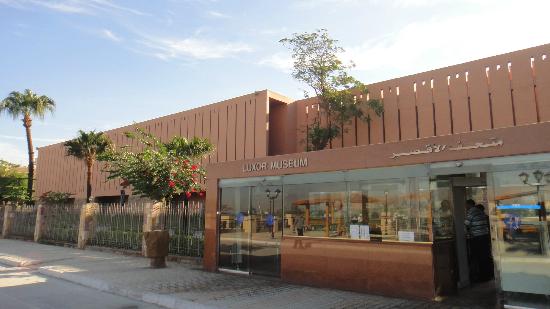
Contrary to the faux hotel employee’s assertions, the museum was open as the website said it would be. The entry fee for non-Egyptians was 100 Egyptian pounds, which sounds like a lot, but is about $6.00 U.S. or $8.00 Cdn. Egyptians pay only a fraction of that which is only befitting; after all this is their history and they simply don’t have the financial wherewithal to pay what for us, seems like a modest entry fee.
One of the things I really appreciated about visiting the various sites in Egypt is that they all have their own unique tickets, which taken collectively, makes for a great set of souvenirs. Here is the Luxor Museum ticket.
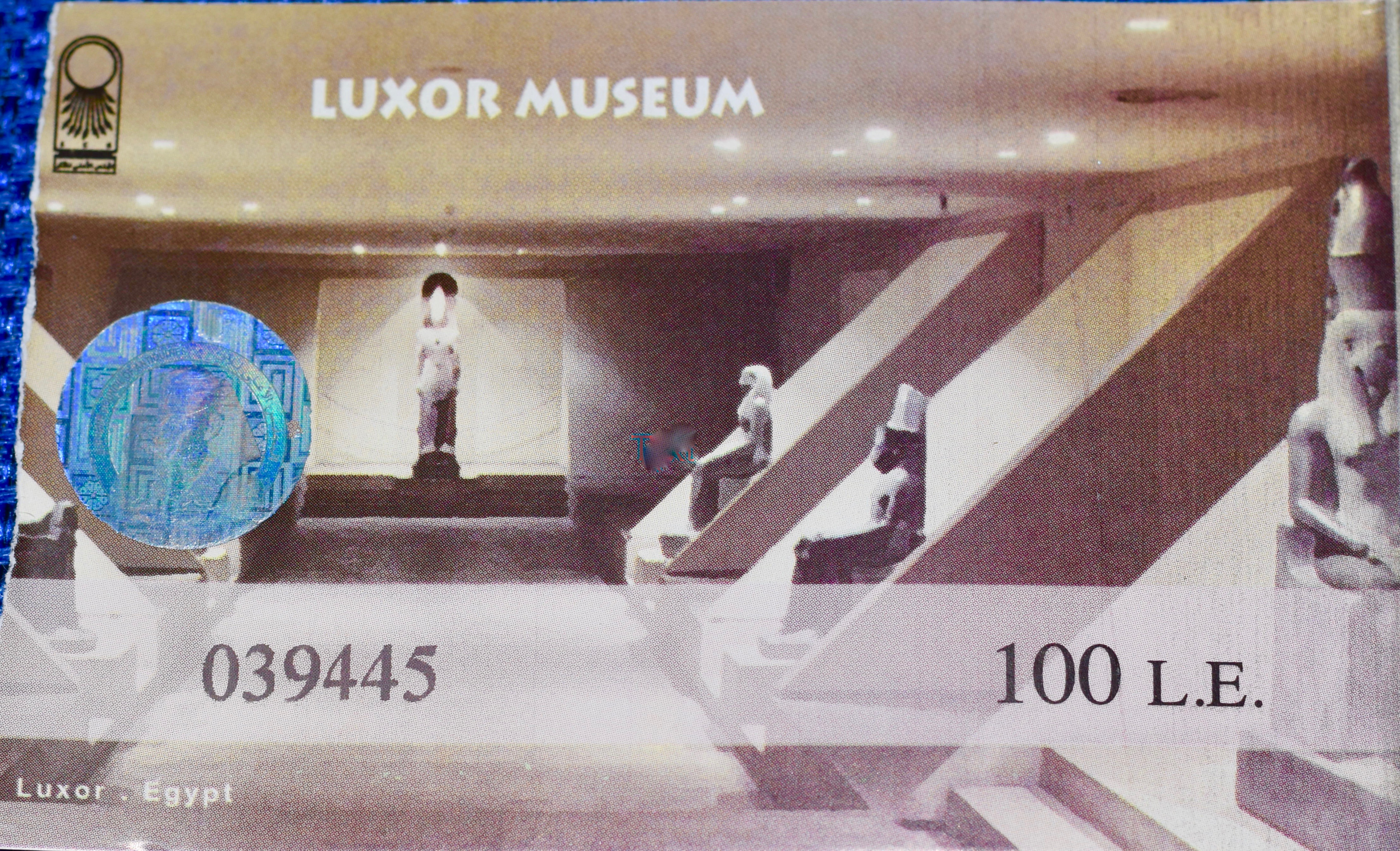
What follows, in no particular order, are what I thought were the highlights of the Luxor Museum starting with a number of items from the tomb of King Tutankhamun or King Tut as most westerners call him. For those who don’t recall, the tomb of King Tut was discovered in 1922 by British archaeologist Howard Carter and still to this day remains the most completely intact tomb ever found of any Egyptian king or queen. Literally hundreds of artifacts were found in various chambers of his tomb in the Valley of the Kings. Most and certainly the most famous are on display in the Cairo Museum, but Luxor, rightfully as the place Tutankhamun actually lived, has some of those treasures on display.
This is a full blown chariot that probably had to be taken apart and reassembled in the tomb. Wooden items like this would never survive the 3,300 years that this one has, but for being literally entombed.
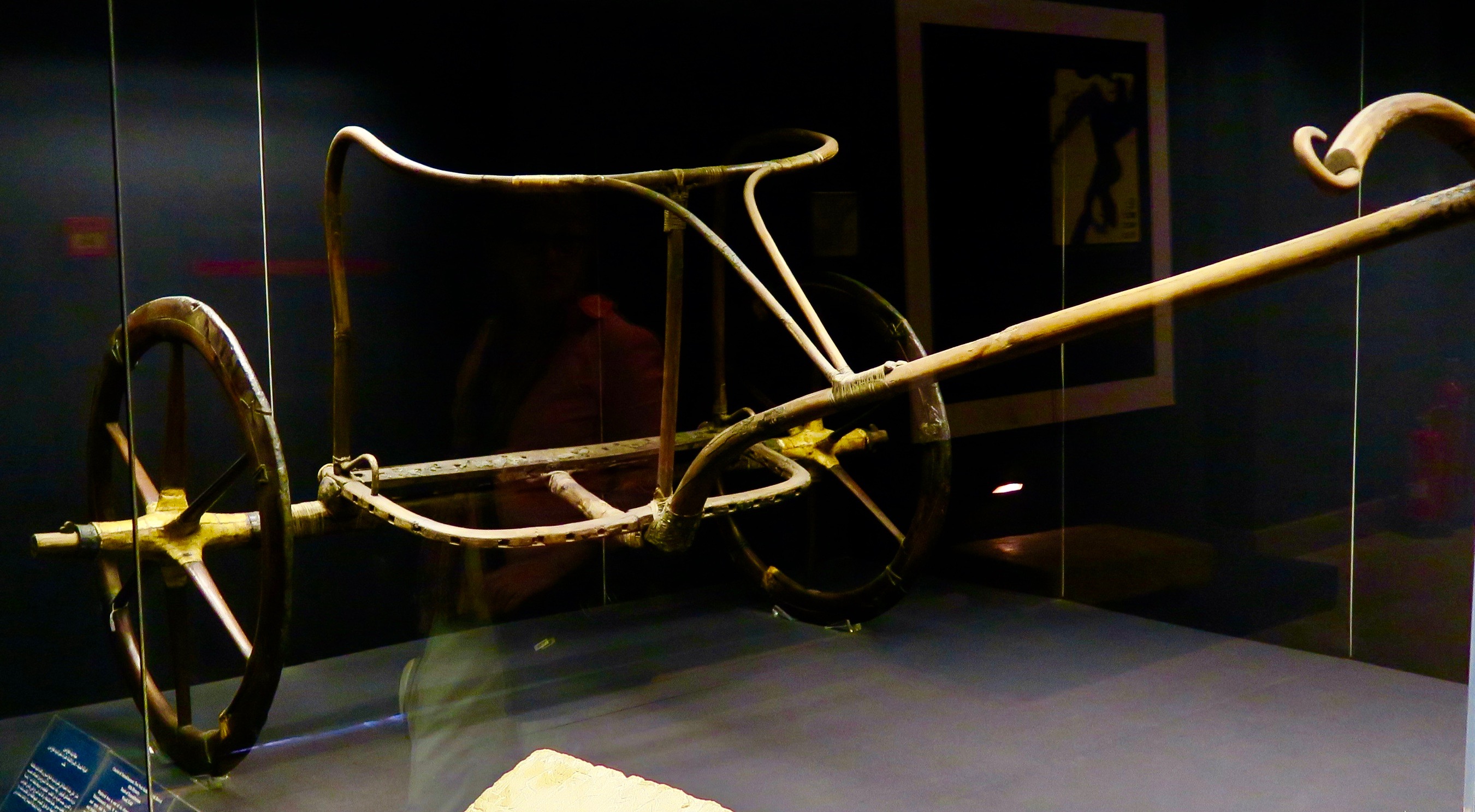
Nor would this bed.
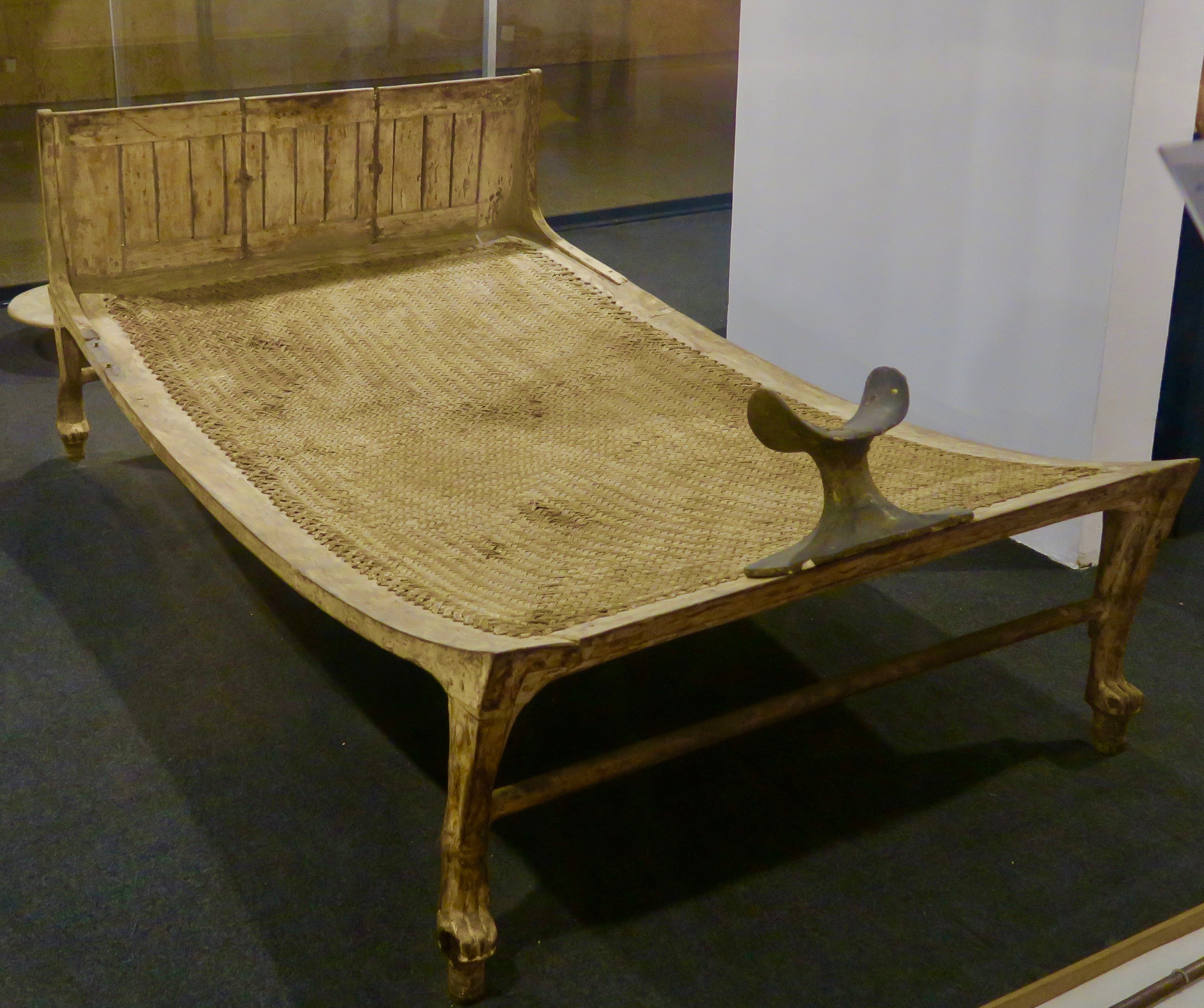
Or this sling, which is something right out of David and Goliath.
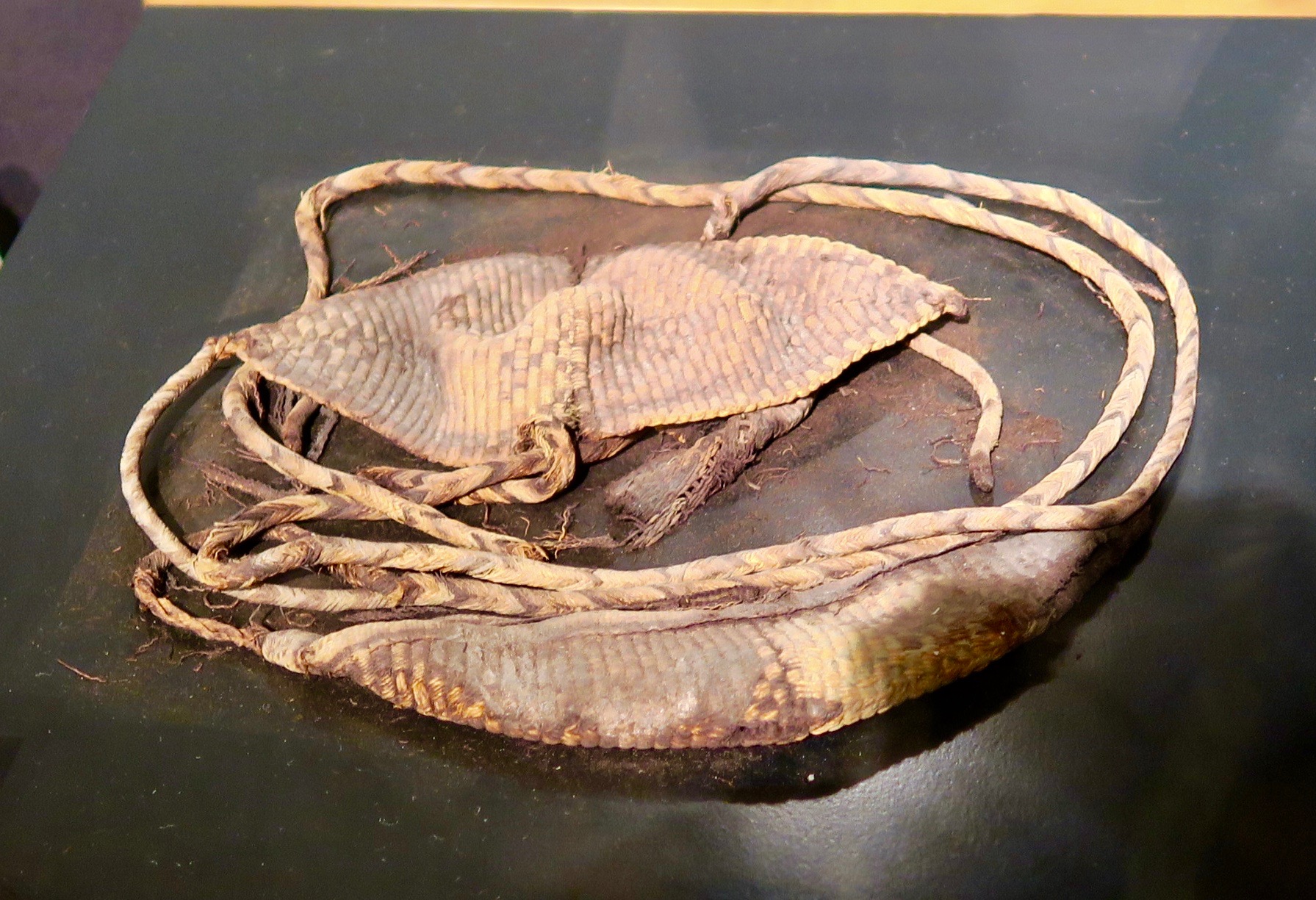
These everyday items show us the importance of finding as many unrifled tombs as possible, whether they be kings, queens, noblemen or priests. But for actually being able to see what these items were made of and how they were built, it would be guesswork at best.
Of course it is the rare and precious items of luxury that most people think, probably rightly, are the primary targets of both modern archaeologists and ancient grave robbers. Here is one of those from Tut’s tomb, a golden sheathed head of the cow goddess Hathor, wife of Horus and responsible for love and happiness in bygone times.
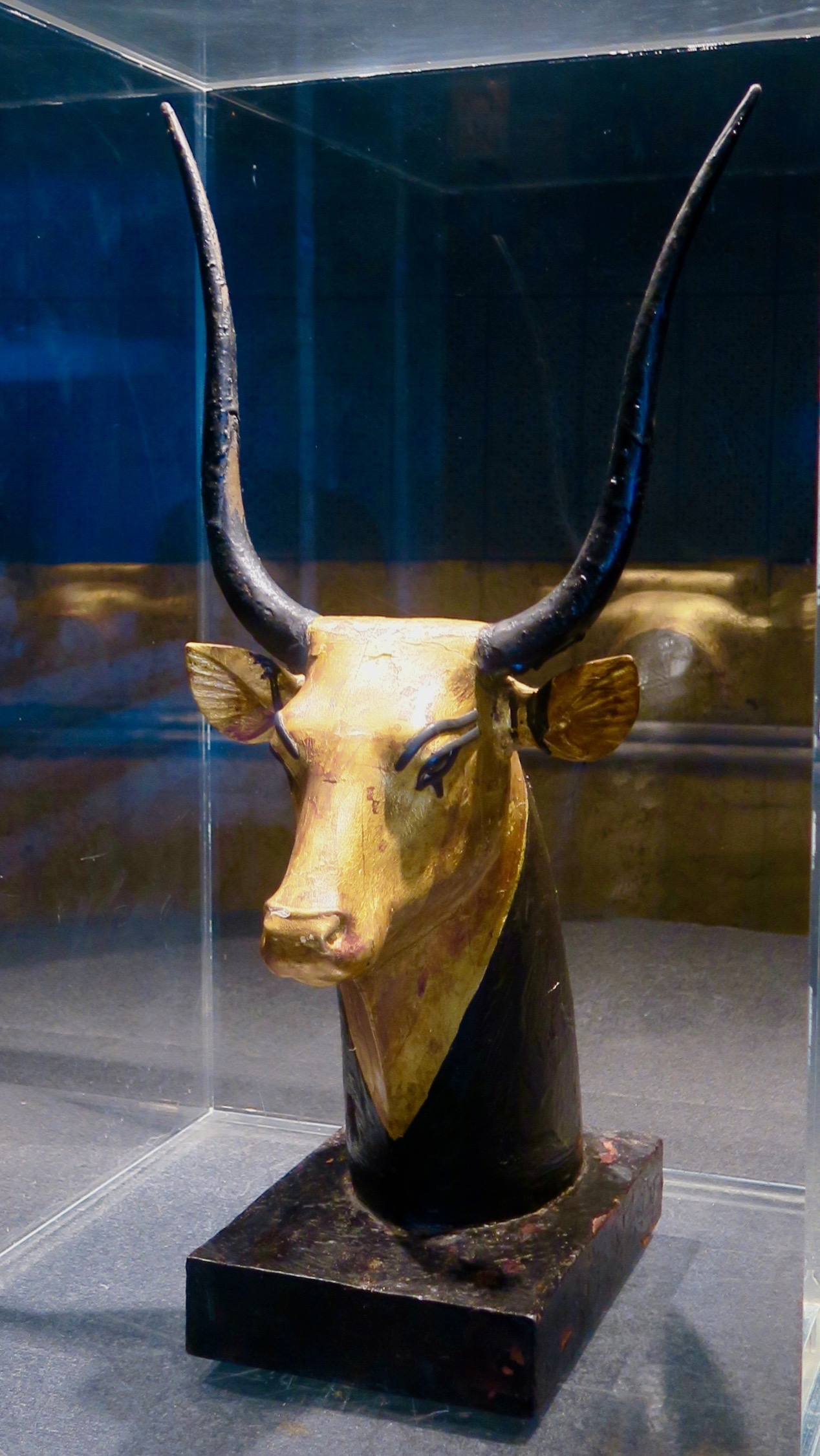
Akhenaten
Much more interesting to me than Tutankhamun is his father Akhenaten who judging from his appearance may not only have been the first monotheist, but the first metro sexual as well.
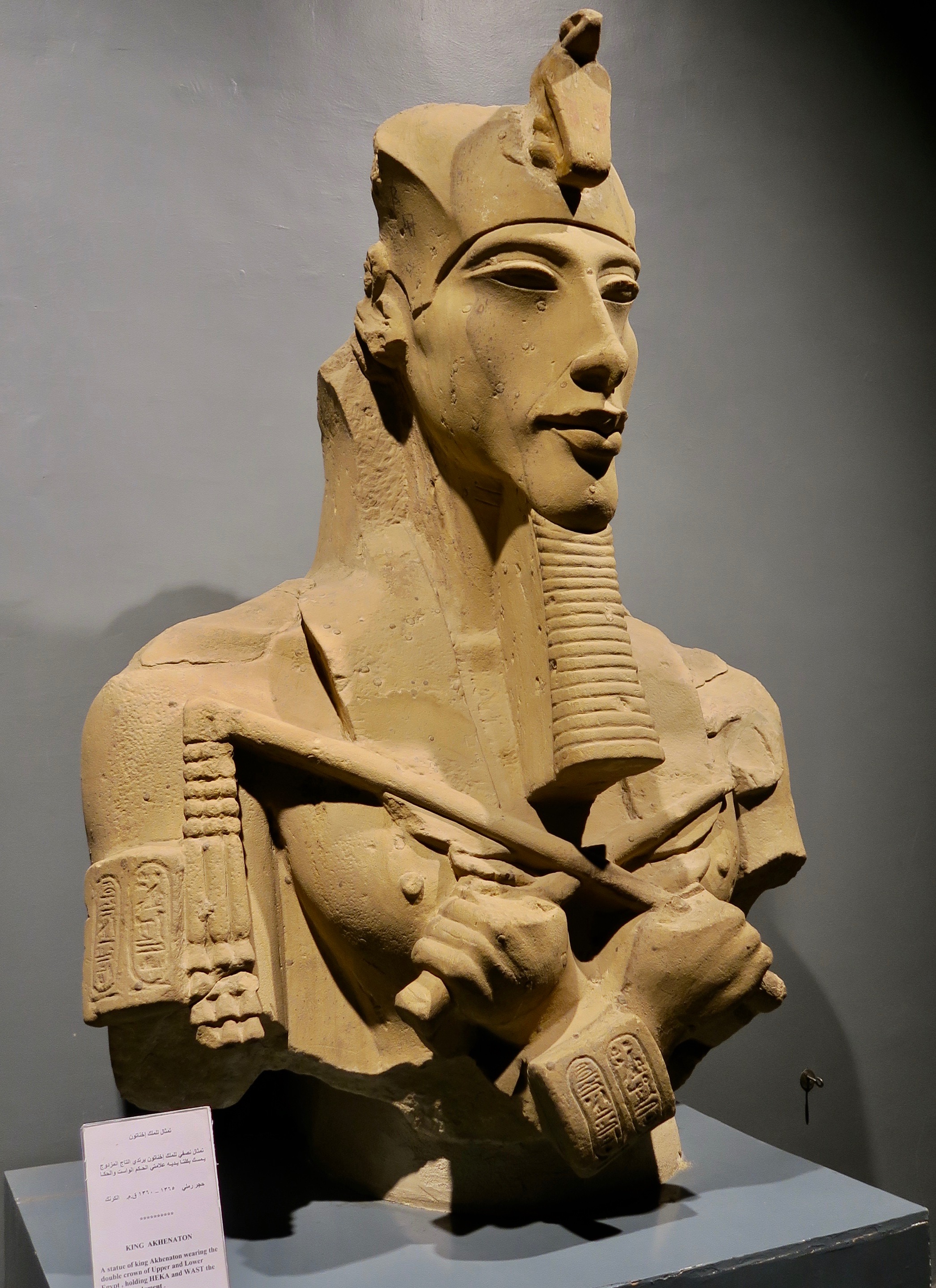
Beginning his reign as Amenhotep IV and coming from a line of strong kings that ruled over a very prosperous Egypt, he changed his name to Akhenaten which literally means follower of Aten. Completely breaking with tradition, he declared Aten to be the only true god and set about trying to destroy all traces of Amun, up until then, the chief god of Thebes and the one to who the great Temple of Karnak was dedicated. This was not good news for the priest industry which had made a very good living out of serving the dozens if not hundreds of major and minor Egyptian deities who were now suddenly deos non grata. Not surprisingly, after his death and the boy king Tutankhamun succeeded him, the old ways returned and the Egyptians were to remain multi theists for another thirteen hundred years when first a guy from Bethlehem and then one from Mecca changed their minds.
This is a bust of Akhenaten, formerly known as the guy called Amenhotep IV.
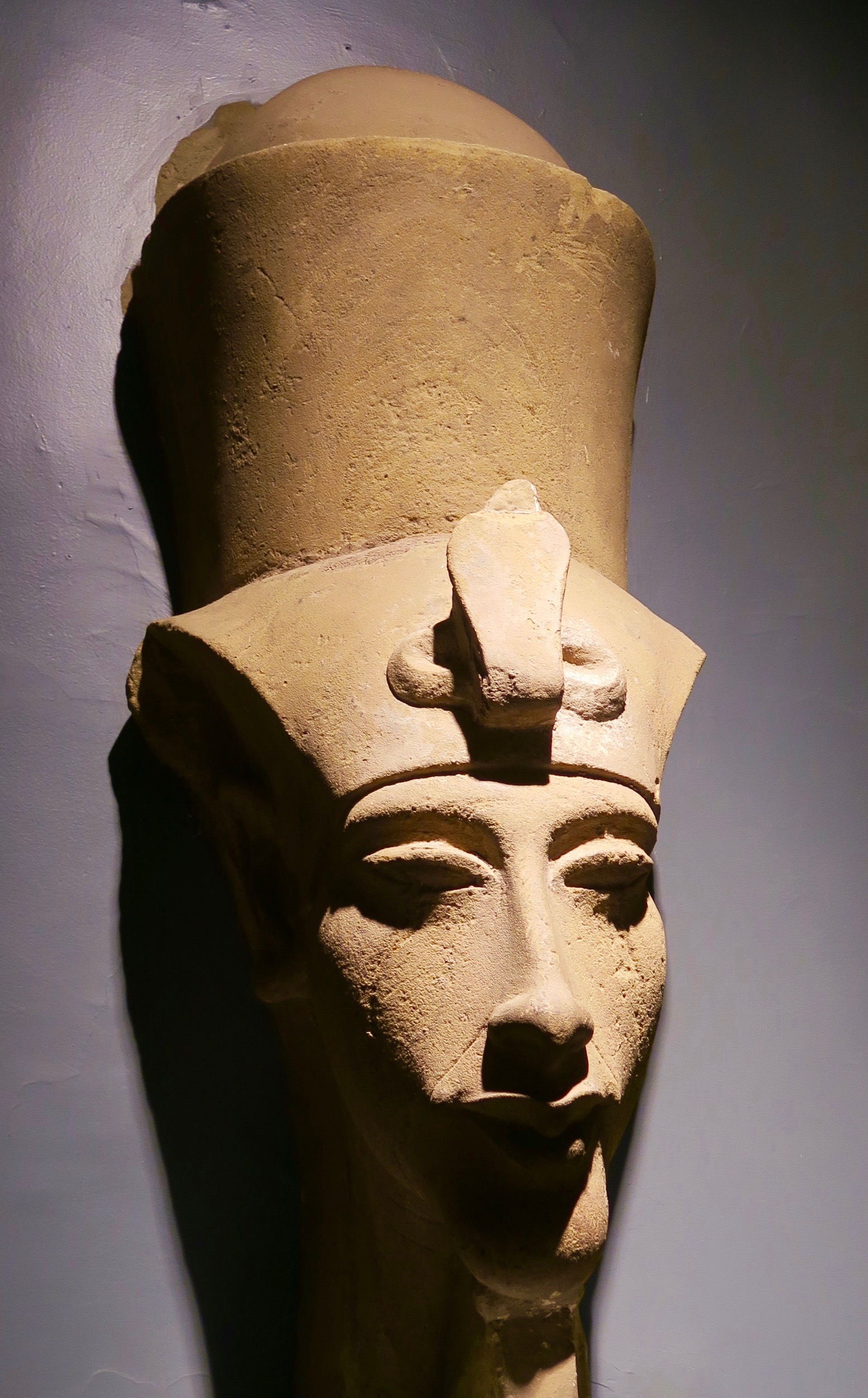
Other prominent kings on display in the Luxor Museum are Amenemhat III, looking like a decidedly grumpy Bruce Springsteen.
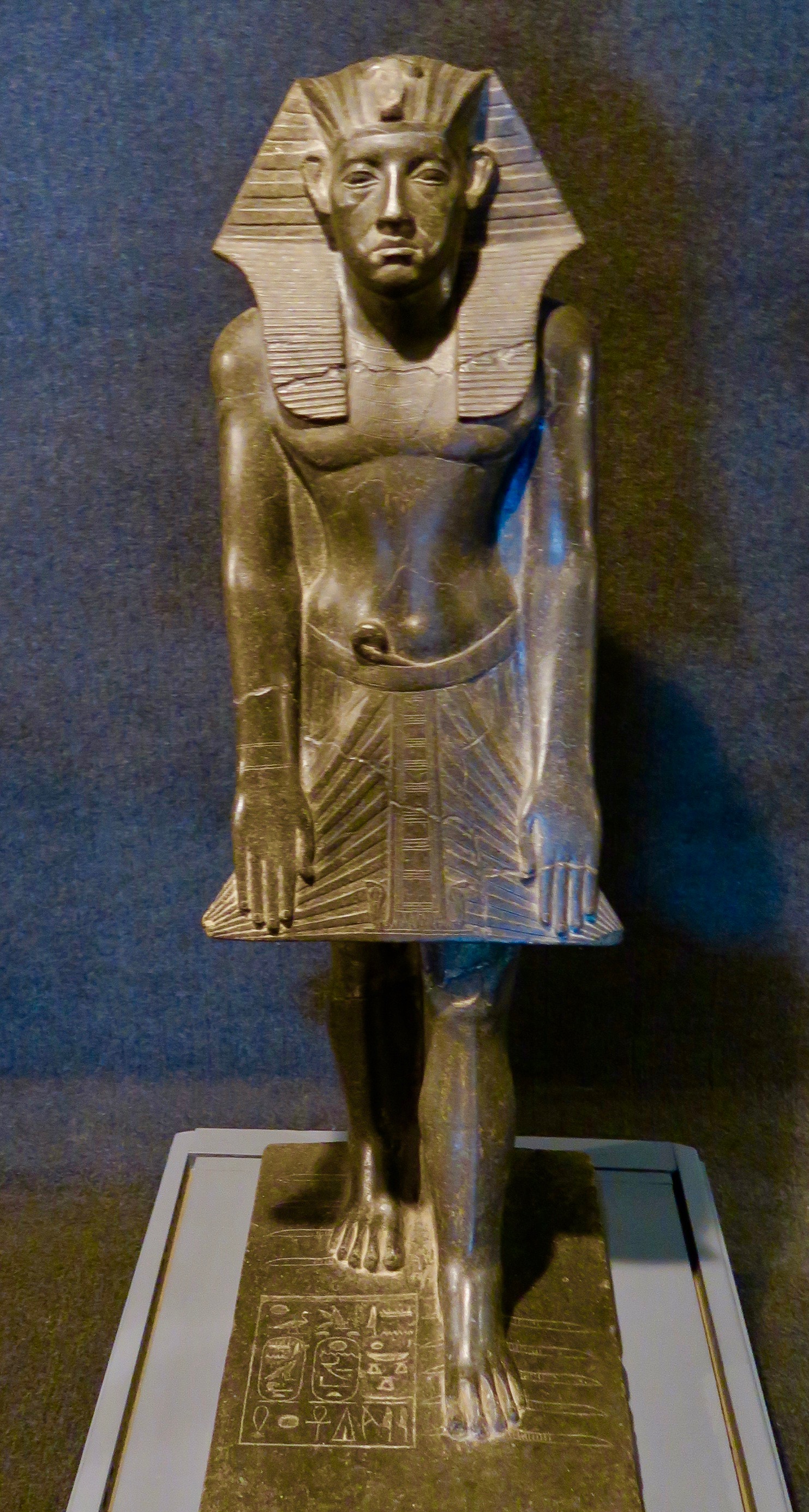
Akhanaten’s father, Amenhotep III in lovely red marble, has an almost Buddha like appearance, quite different from his son’s angularity.
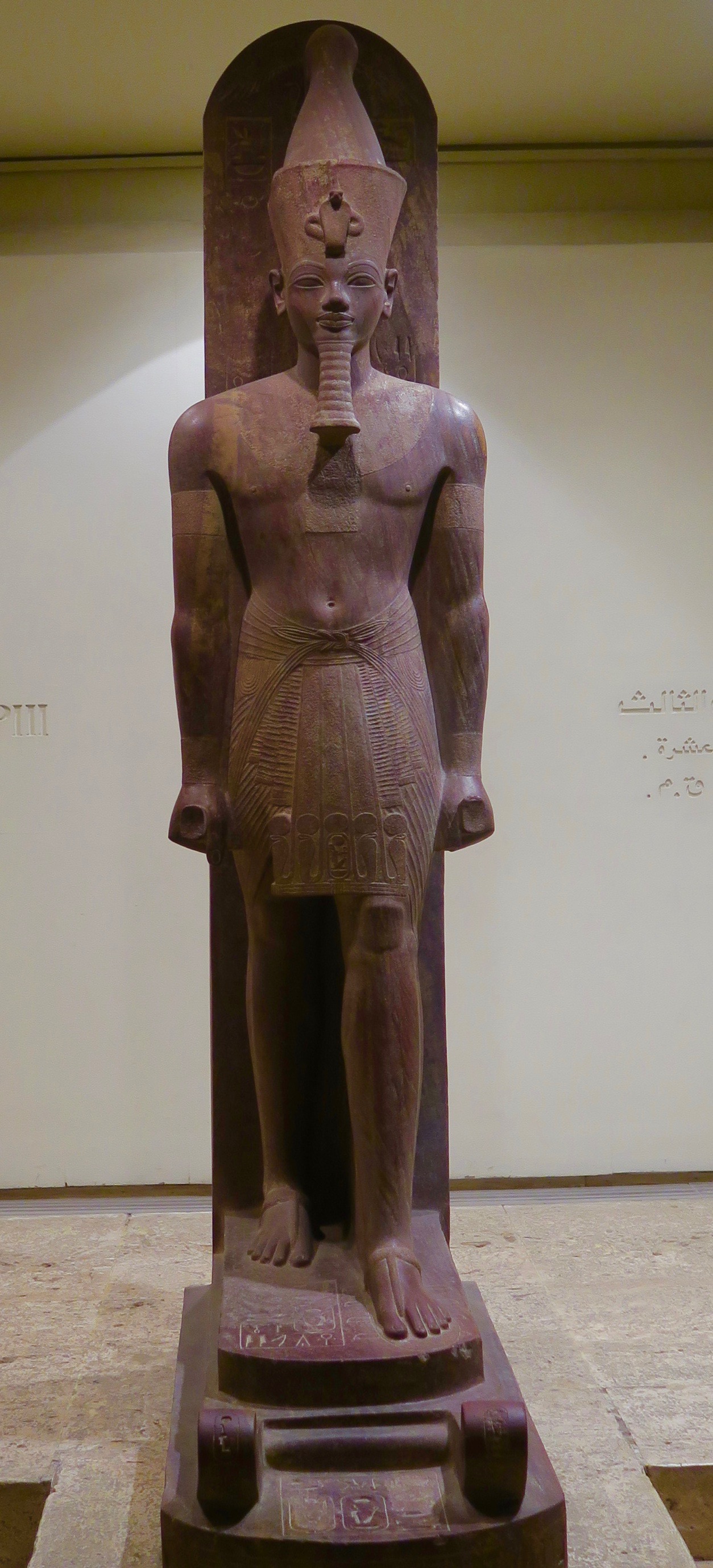
This is another take on Amenhotep III and the fact that the face is so similar in both statues, just as is Akhenaten’s, tells me that these were closer to actual portrayals than stylized likenesses. You can ignore the guy on the right. He’s just there for scale.
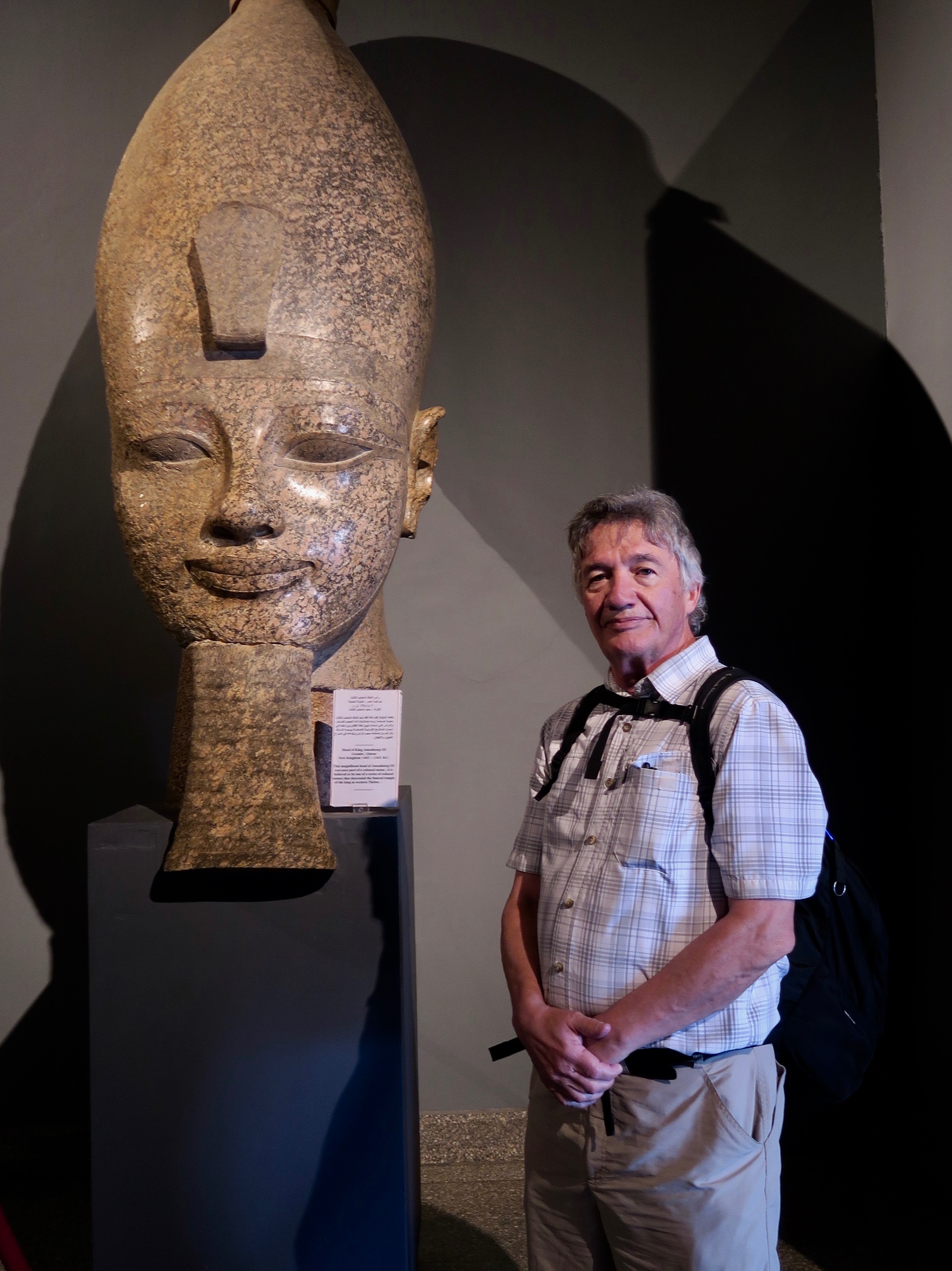
This is one of the most famous of all Egyptian statues. It depicts a young Amenhotep III with the crocodile headed god Sobek holding a life giving ankh in blessing of him. It was not discovered until 1967.
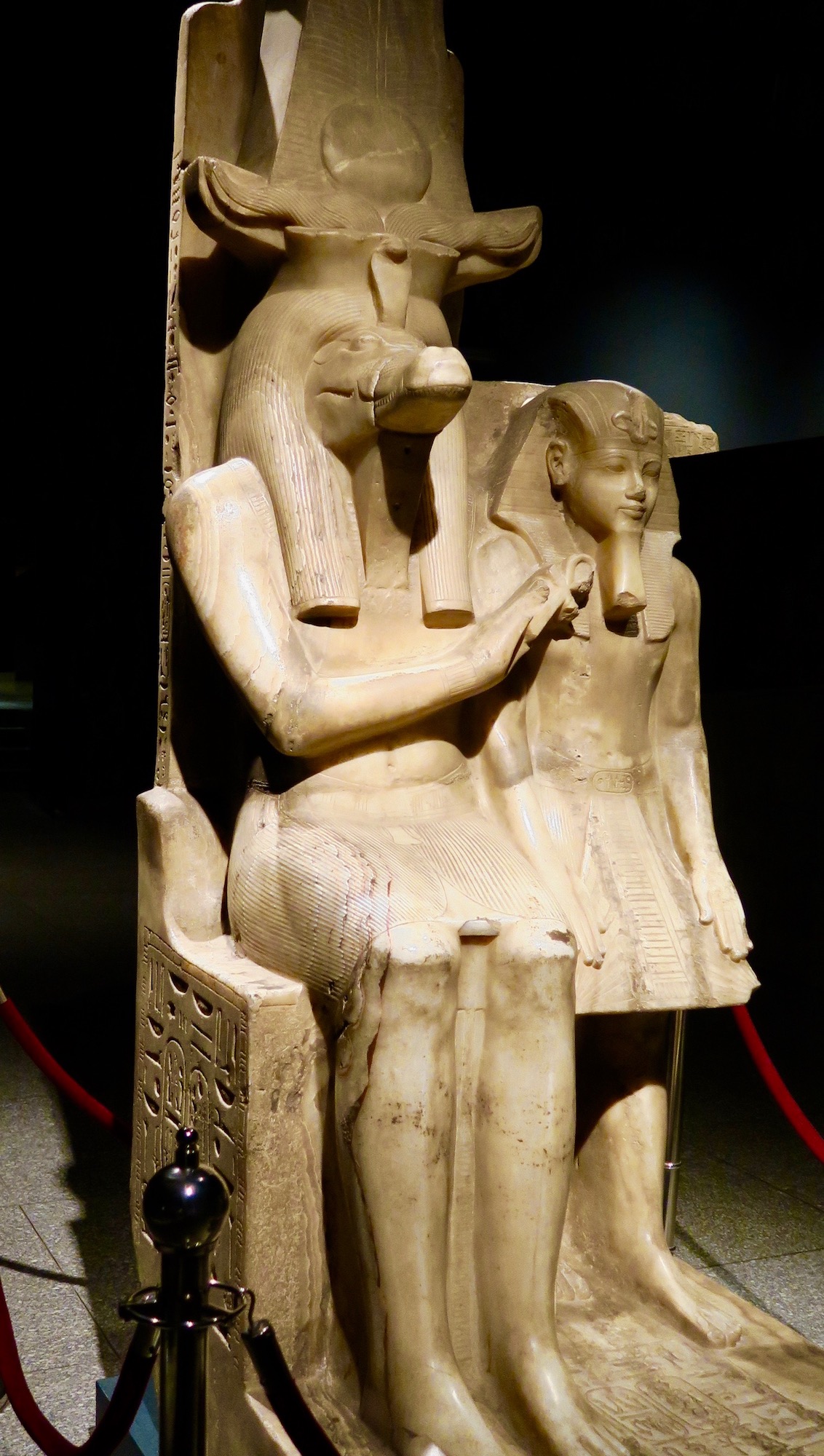
Cut from Egyptian alabaster, it is seated in a dark room and fairly glows from within. Like much famous art, it has a power you have to experience in person to fully understand and would make visiting the Luxor Museum worthwhile if this were the only thing on exhibit.
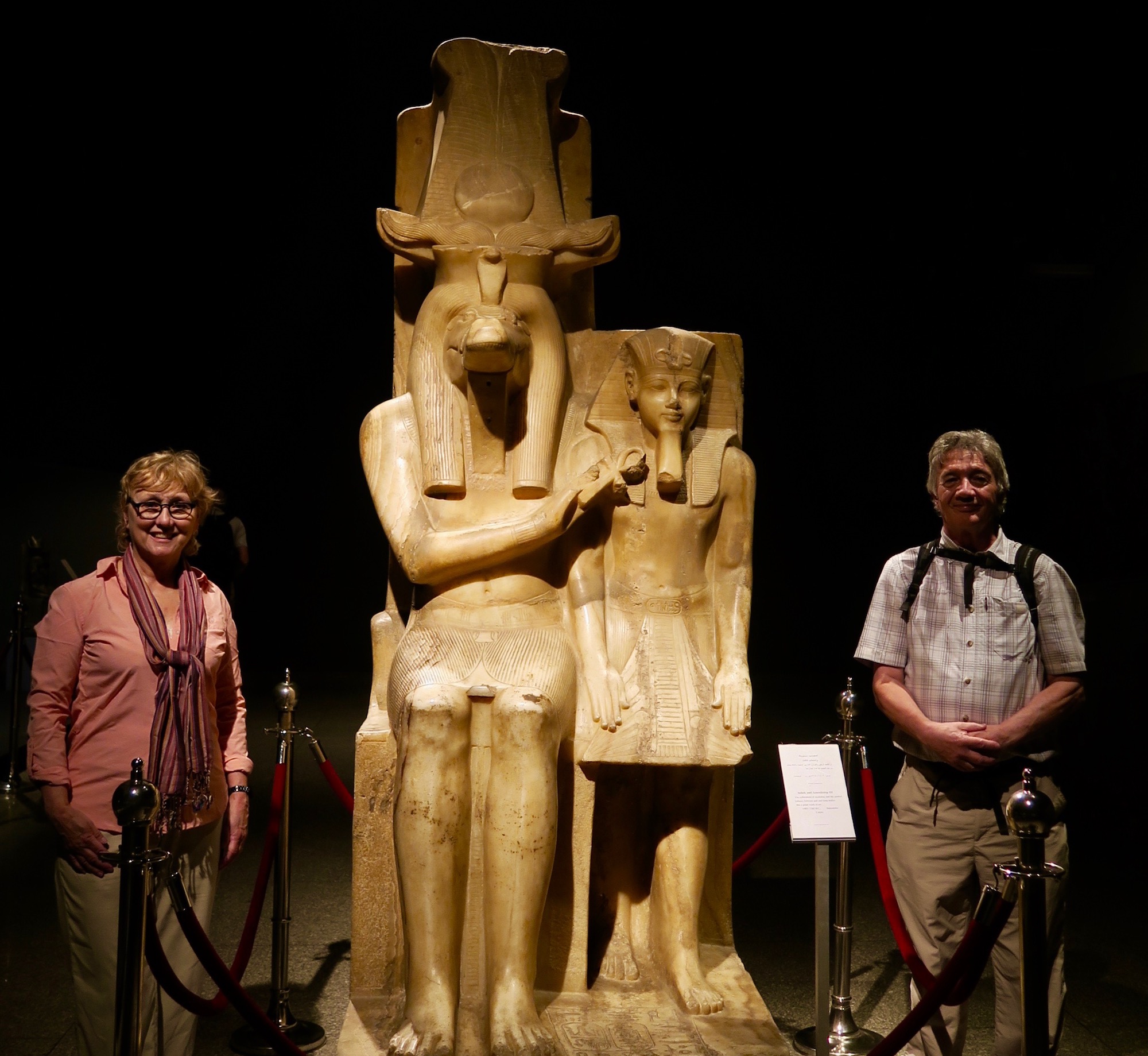
In terms of military victories followed by a prolonged period of peace it is hard to beat King Thutmose III who played the role of Augustus long before that emperor established the Pax Romana. Thutmose III conquered Syria, Nubia, Phoenicia and over 360 cities in all, never losing a battle, so he was also a precursor of Alexander in that manner. To top it off he had to put up with sharing the kingship with his aunt Hatshepsut for twenty years. Ironically, she has come down through history with more fame than her illustrious nephew.
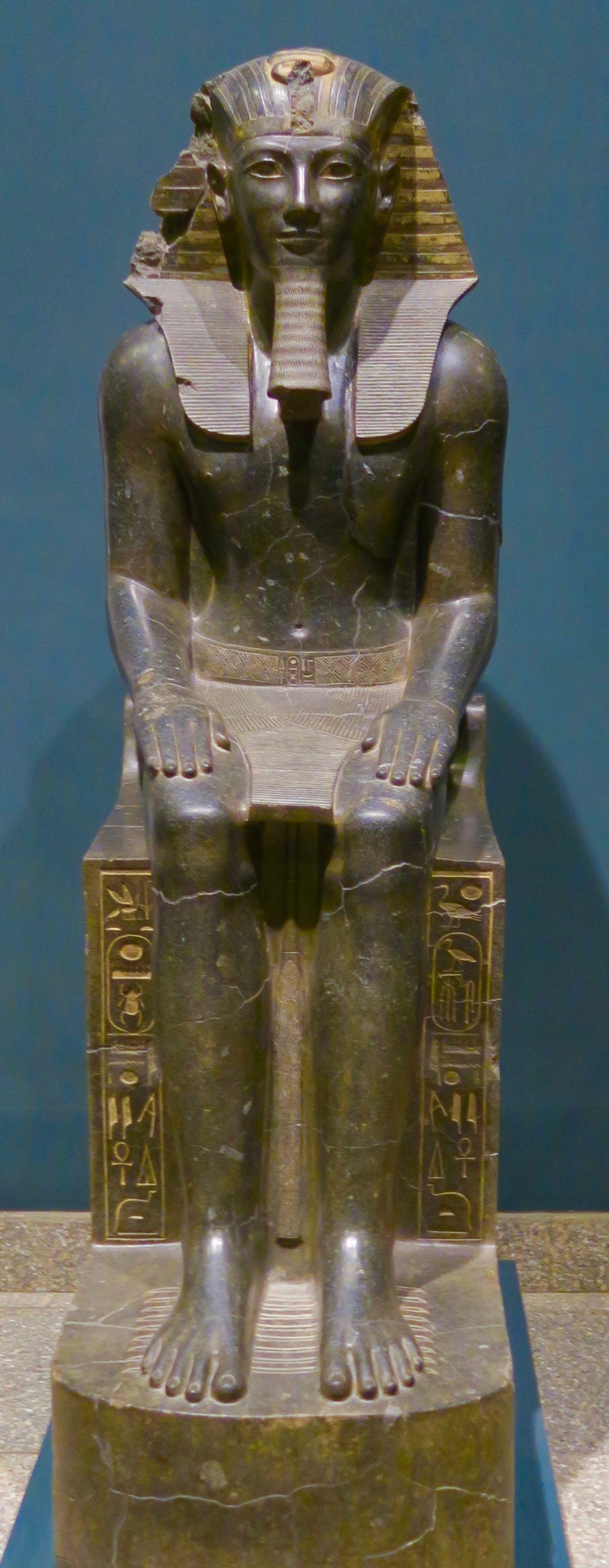
Other prominent kings on display in the Luxor Museum include Seti I.
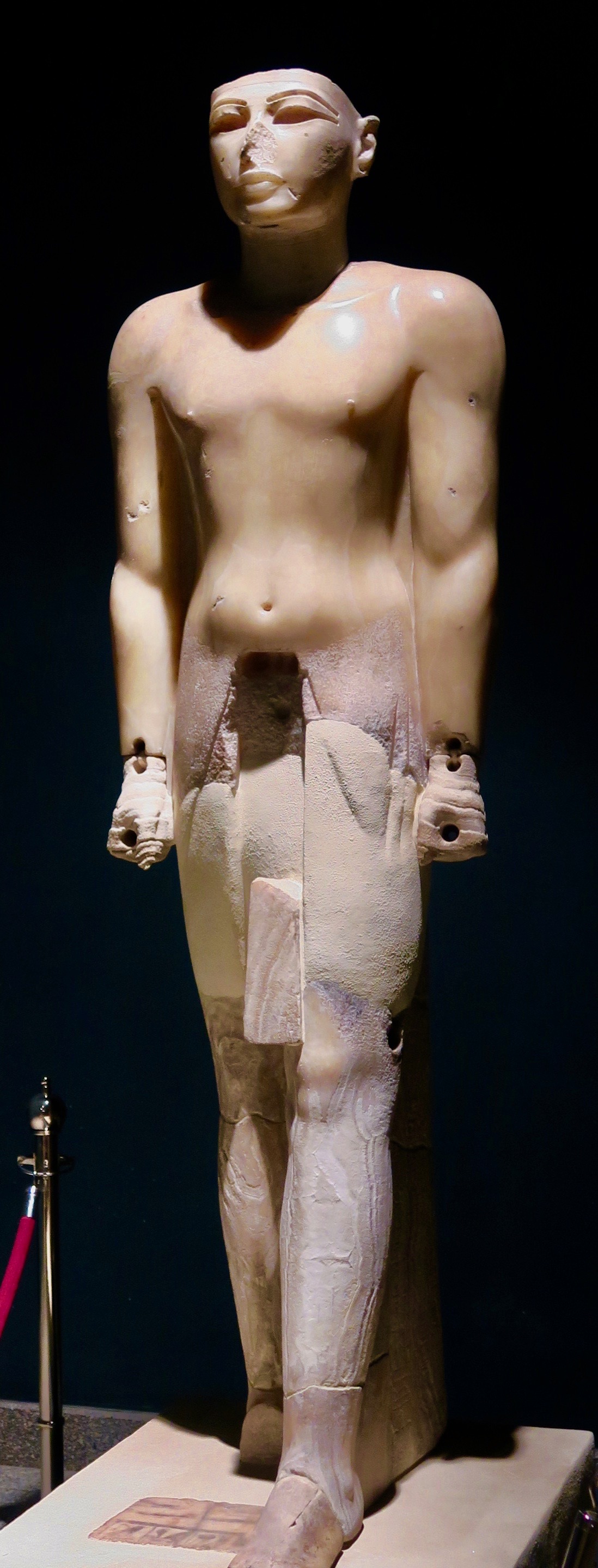
Ramses VI who is much more famous for his tomb (which we hope to visit in the Valley of the Kings in the next day or two) than for anything he did in life. Here he is lording it over a Libyan prisoner.
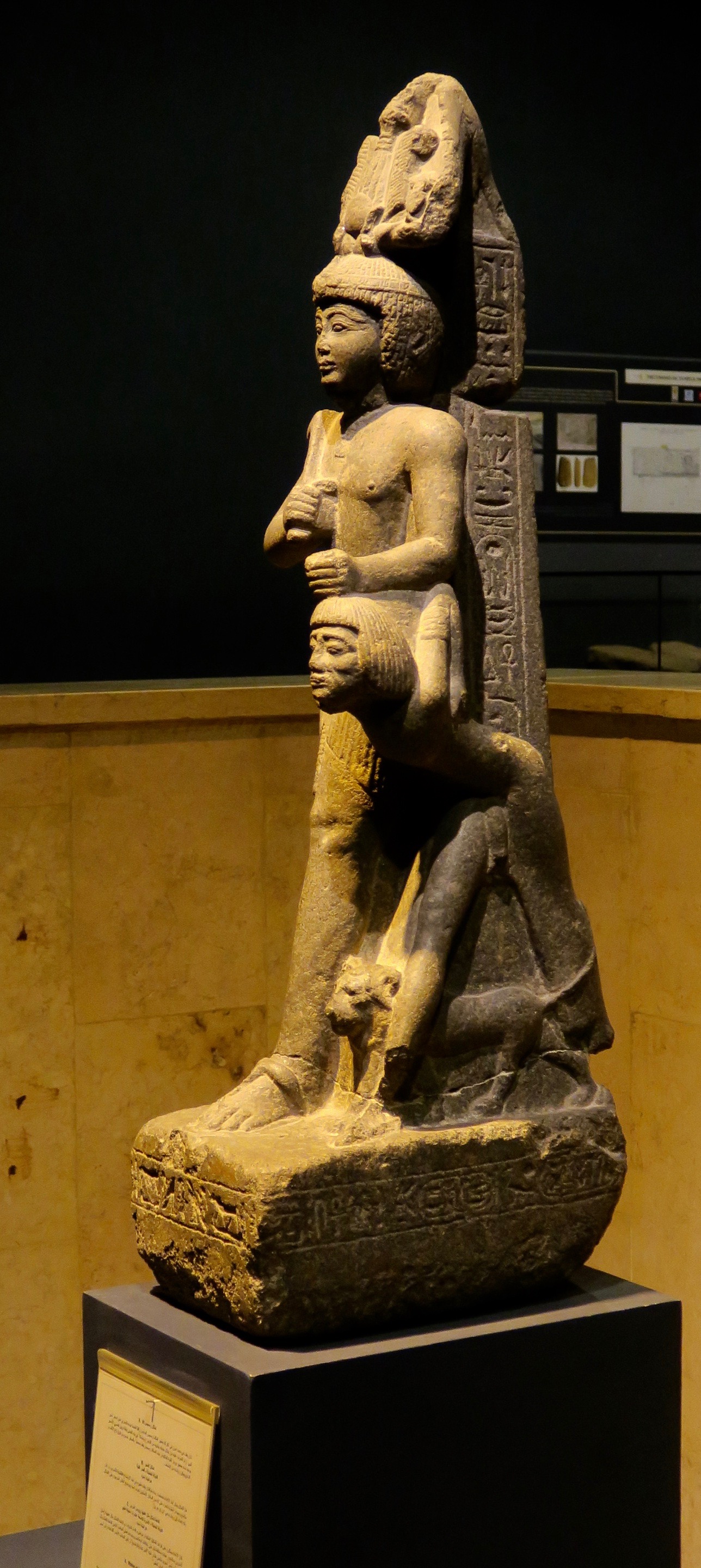
This is the last king I’ll ask you to look at, then we’ll move on to a few gods and end with a couple of mummies. Senusret III was so popular during his lifetime that he was one of the very few kings ever worshiped as a living god. This bust of pink granite portrays him with his characteristic sunken eyes and big ears.
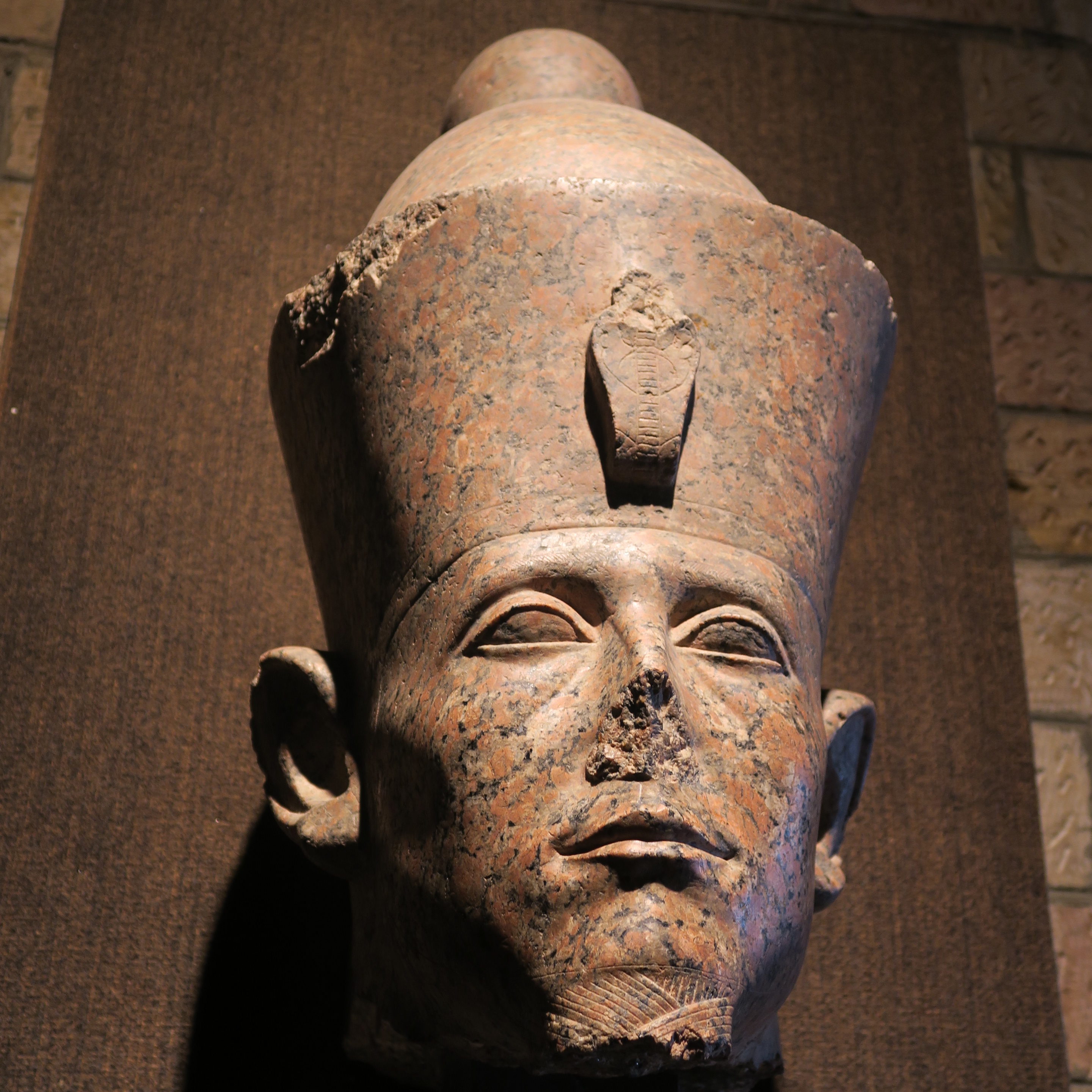
Taken as a whole, these and many other statures of the kings of Egypt, really raise the question “Who were these people?” Their features and appearance are so strikingly different from king to king and dynasty to dynasty that it makes you wonder. I also thought that it was important to visit the Luxor Museum and learn a little bit more about these kings before going to see their tombs in the Valley of the Kings.
About those gods, this is one of my favourites, Sekhmet, the lion headed goddess who is associated with a destruction myth similar to those in the Old Testament. In this case Ra, pissed off at mankind’s usual stupidity, cupidity and general lack of respect, sends Sekhmet to earth to go on a rampage and she goes overboard, he repents and mankind gets yet another second chance. Sound familiar?
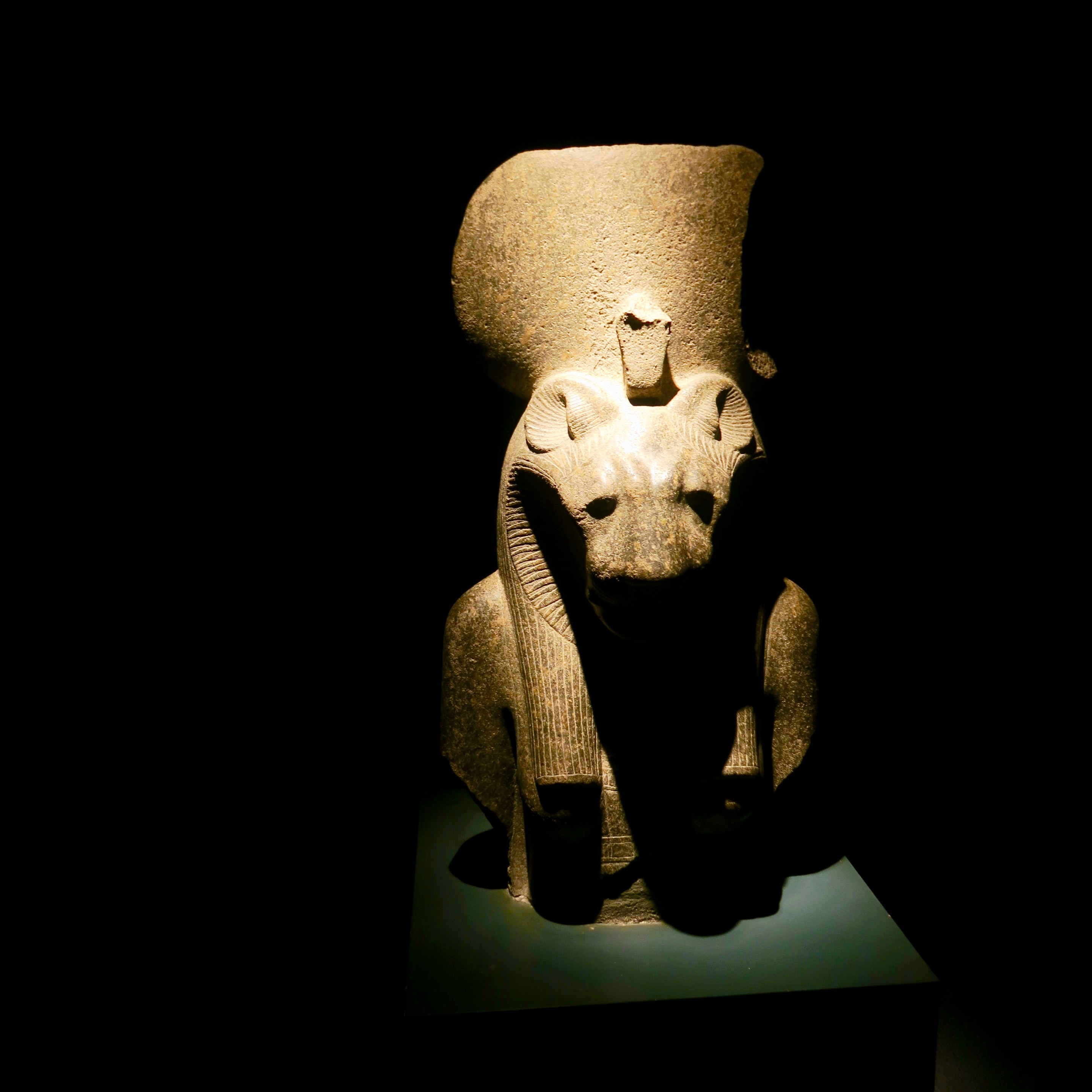
Lastly we have the chief god of Thebes and the one Ahkenaten tried to unseat, Amun and his consort Mut. Amun was the chief god of Egypt for much of its ancient history and had an influence that spread beyond Egypt, morphing into Zeus-Ammon who had an oracle at Siwah, an oasis in the great western Egyptian desert. Historical visitors to this oracle included Alexander the Great who claimed he was following in the footsteps of Hercules and Perseus. Heady stuff.
Mut, which literally means mother, is depicted here in her human form. Not surprisingly her animal form as a vulture is less common.
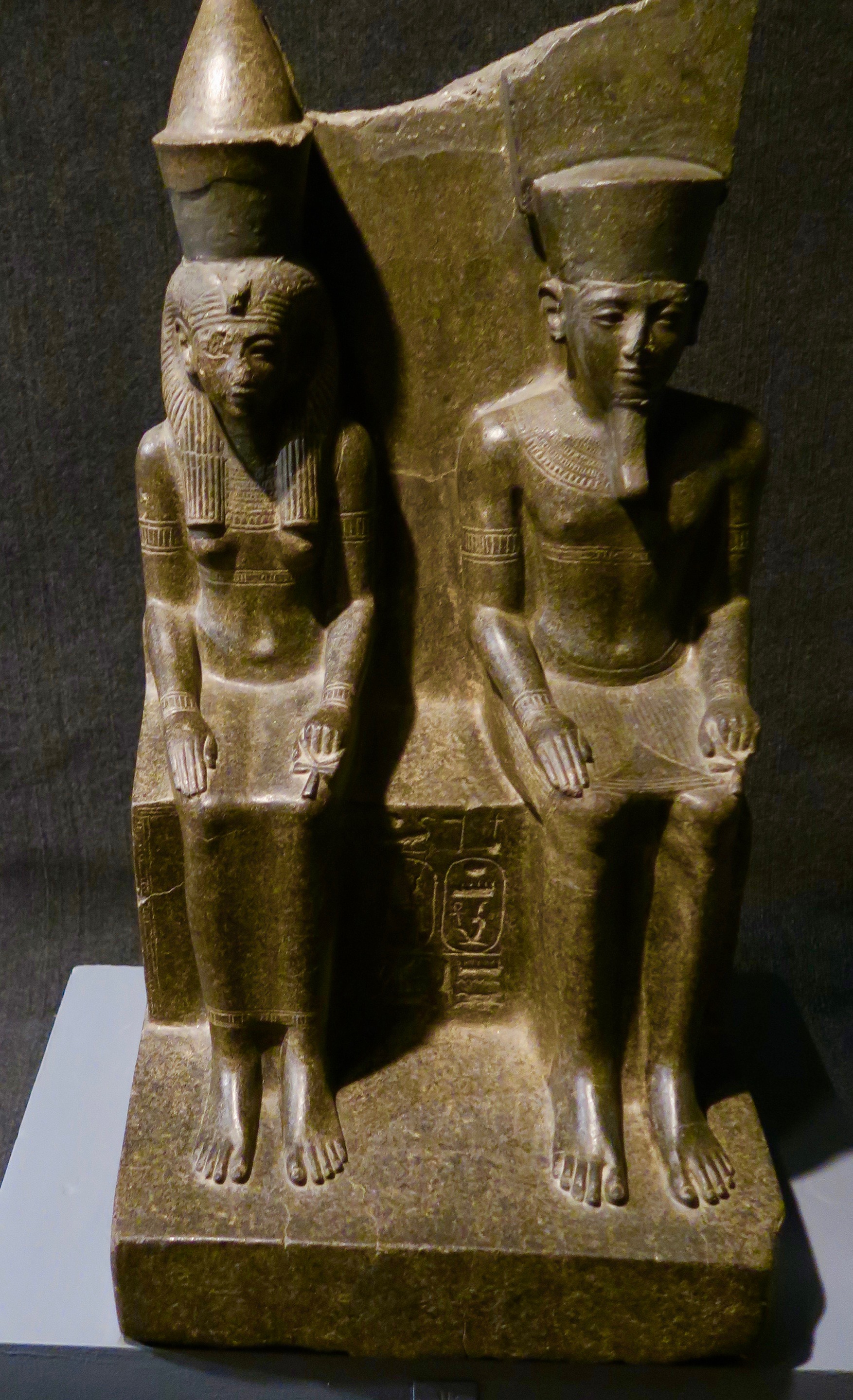
One of the most famous statues on display at the Luxor Museum does not portray a god or a king, but rather an apparently lowly scribe, It is considered one of the most realistic depictions of a real person, Amenhotep son of Hapu in ancient Egyptian art. And he was no lowly scribe. He was an architect, priest and incidentally chief scribe that was so respected that he was deified 1,000 years after his death. There is something about this statue that is the epitome of service (not servitude) and dedication to purpose that comes through thousands of years after its creation.
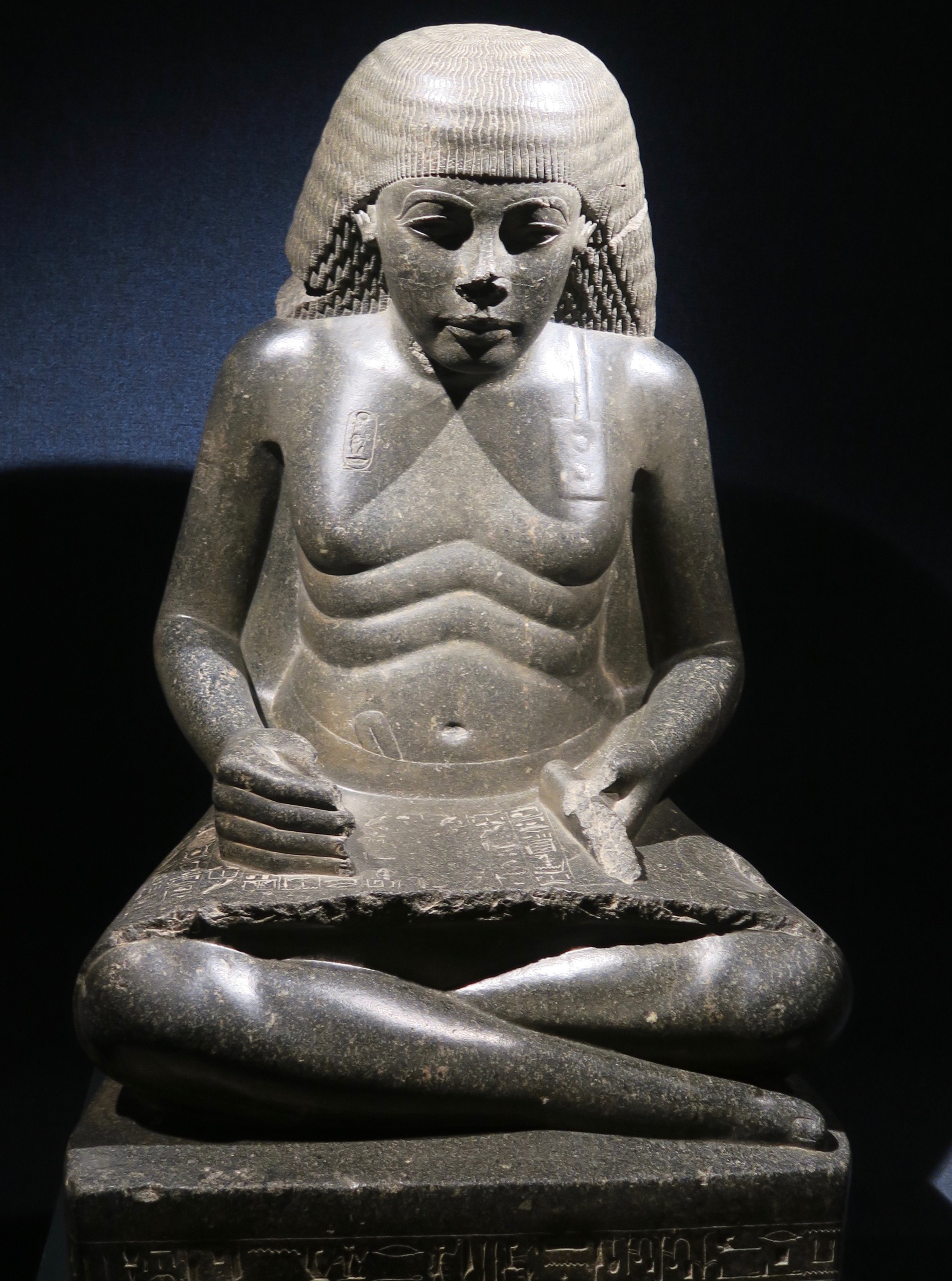
Now the mummies. There are only two, displayed in a dark room built specifically for the purpose and opened in 2004. Dressed only in their wrappings these are the things that give children and plenty of adults nightmares and yet up close they are anything but scary, in fact the opposite. I actually felt strangely sympathetic. These men, so powerful in their time, literally believed that they would rise again after death, resurrected to life in the same body to live forever. Yet here lies the proof of their folly for all to see, revealed to be nothing but wishful thinking with a good dose of hubris thrown in. You poor bastards.
This is Ahmose I, who liberated Egypt from the tyranny of the Hyksos invasion, ruled for twenty-five years and was buried in a tomb that has never been found. Say again? If its never been found than what’s he doing here? Good question.
In the 1870’s a family living near the Valley of the Kings across the river from Luxor starting showing up with incredible ancient Egyptian artifacts for sale. It turns out they had discovered a tomb that contained the mummies of over fifty kings that had been reinterred in the tomb to foil grave robbers. Ahmose I was among those as were other great kings Seti I, Thutmose III, Amenhotep I and even the great Ramses II.
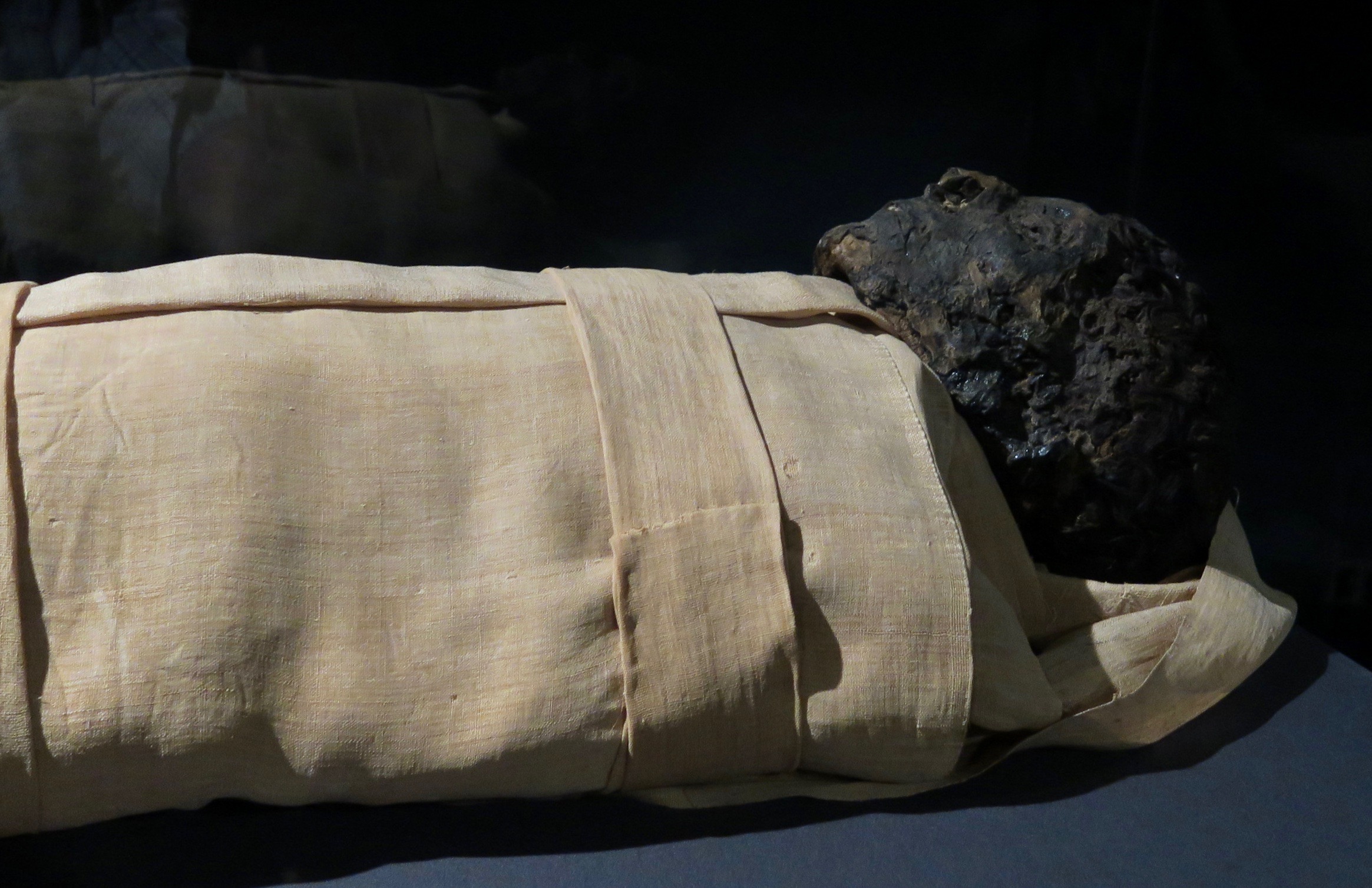
Lastly on our visit we have a mummy believed to be, but not with utter certainly, that of Ramses I and the story of how he came to be here includes a sojourn in Canada – really. He was a commoner who founded the 19th Dynasty, came to rule at an advanced age and only lasted a couple of years. His tomb has been discovered and it was completely looted, not even the mummy was there. However, he was listed as one of those reinterred in the tomb with the fifty other kings like Ahmose I that I referred to above, except he wasn’t there either.
If you were ever in Niagara Falls from the 1960s to the 1980s when the place was at its height of kitschiness, you might remember the Daredevil Hall of Fame. I do. Well it closed in 1999 and sold its collection to a private collection in Atlanta, including one unidentified mummy. With modern techniques, by 2004 it was determined to be, you guessed it, Ramses I. No doubt the Egyptian tomb raiders had disposed of it before their shenanigans were discovered and put a stop to. The new owners were decent enough to return it to Egypt and here I give you, in the flesh, or what’s left of it, Ramses I.
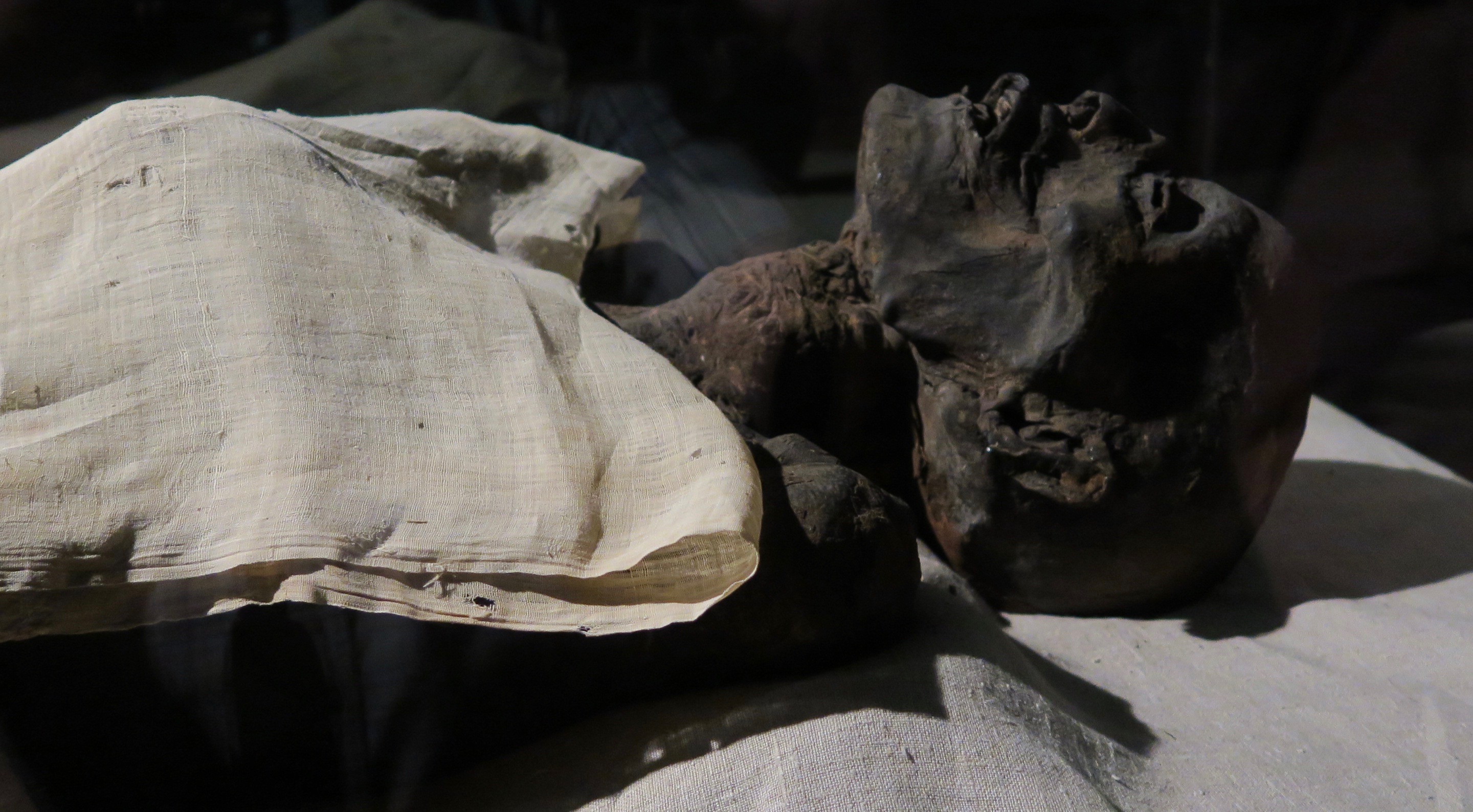
That concludes our visit to the Luxor Museum and I hope I have convinced you not to miss it should you find yourself in the city of Luxor. On the next post we’ll visit the Temple of Karnak. I hope you’ll join me.
Here is a link to the Egypt photo gallery which contains photos from all the Egypt posts.

